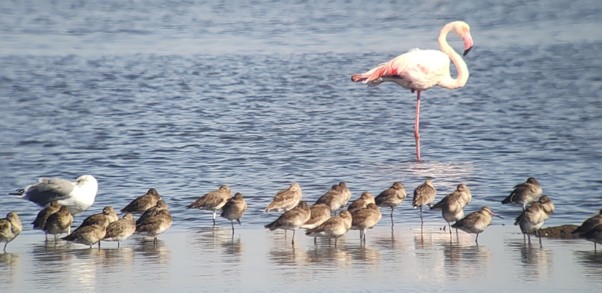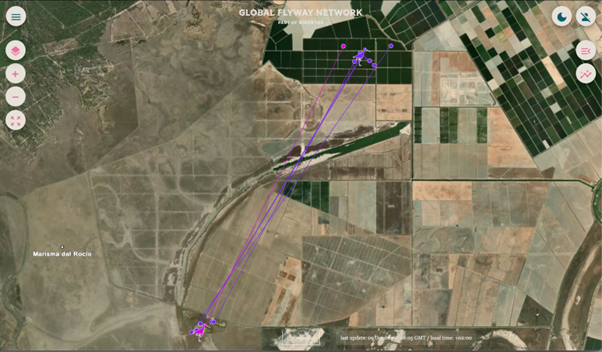Wouter Vansteelant & Jos Hooijmeijer
In the first weeks of October, the Godwit team made a short expedition to look for colour-ringed godwits in the greater Doñana area, and in the nearby Odiel estuary in Huelva. The main objective of these October expeditions is to obtain ring-readings of the minority of Continental Black-tailed Godwits that spend the northern winter north of the Sahara. This year, Jos Hooimeijer who has been visiting the Iberian godwit sites for many years teamed up with Wouter Vansteelant who is studying the response of godwits to rapid wetland loss in the Doñana region.

Despite the fact that much of the godwits’ former wintering areas in the Guadalquivir delta around Doñana National Park have dried up due to a persistent drought, Jos and Wouter were still able to find several thousand birds on this expedition. Among the flocks of godwits we found 70 birds that were colour-ringed in the long-term research programme of RUG, and 21 birds ringed by other schemes. Not the best result compared to the last few October expeditions, but this was partly due to sometimes difficult ring-reading conditions, with godwits standing belly-deep in water.
Most godwits were seen alongside large concentrations of other waterbirds in the few remaining wetlands in the region that were used by the transmitter-birds in the days and weeks prior to our expedition. In general, the field observations matched very well with the behavioural patterns in the tracking data of the transmitter-birds. For example, at the rice fields of Hato Blanco Jos and Wouter saw godwits arriving in the evening, while leaving the rice fields in the early morning, entirely consistent with nocturnal foraging on these rice fields by several GPS-tracked birds. These observations and others are related in detail in the richly illustrated October 2023 Expedition report that is now freely available online, along with the report of the more extensive February 2023 Expedition as well as previous expeditions. These latest reports can make for grim reading as 2023 was the driest year since we started to survey godwits in southern Spain. But our efforts are arguably more relevant than ever, now that the region faces unprecedented impacts of climate change, and while major changes in water and natural area management are underway.




